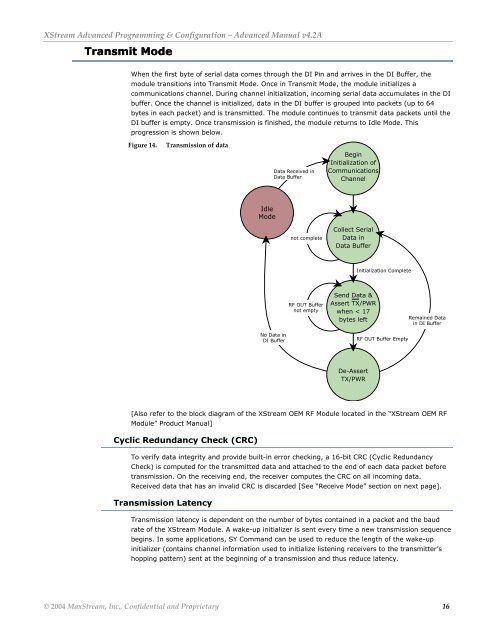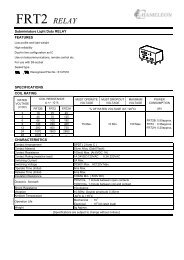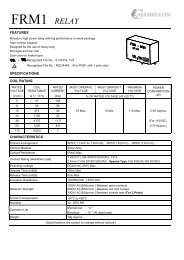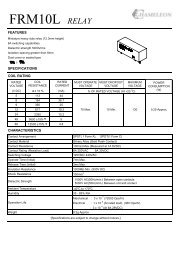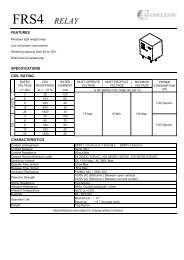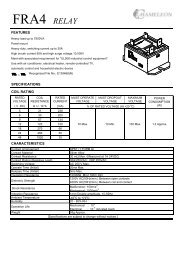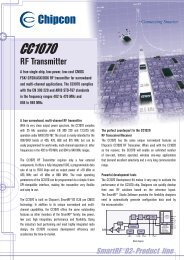XStream⢠Advanced Programming & Configuration
XStream⢠Advanced Programming & Configuration
XStream⢠Advanced Programming & Configuration
Create successful ePaper yourself
Turn your PDF publications into a flip-book with our unique Google optimized e-Paper software.
XStream <strong>Advanced</strong> <strong>Programming</strong> & <strong>Configuration</strong> – <strong>Advanced</strong> Manual v4.2A<br />
Transmit Mode<br />
When the first byte of serial data comes through the DI Pin and arrives in the DI Buffer, the<br />
module transitions into Transmit Mode. Once in Transmit Mode, the module initializes a<br />
communications channel. During channel initialization, incoming serial data accumulates in the DI<br />
buffer. Once the channel is initialized, data in the DI buffer is grouped into packets (up to 64<br />
bytes in each packet) and is transmitted. The module continues to transmit data packets until the<br />
DI buffer is empty. Once transmission is finished, the module returns to Idle Mode. This<br />
progression is shown below.<br />
Figure 14.<br />
Transmission of data<br />
Data Received in<br />
Data Buffer<br />
Begin<br />
Initialization of<br />
Communications<br />
Channel<br />
Idle<br />
Mode<br />
not complete<br />
Collect Serial<br />
Data in<br />
Data Buffer<br />
Initialization Complete<br />
RF OUT Buffer<br />
not empty<br />
Send Data &<br />
Assert TX/PWR<br />
when < 17<br />
bytes left<br />
Remained Data<br />
in DI Buffer<br />
No Data in<br />
DI Buffer<br />
RF OUT Buffer Empty<br />
De-Assert<br />
TX/PWR<br />
[Also refer to the block diagram of the XStream OEM RF Module located in the “XStream OEM RF<br />
Module” Product Manual]<br />
Cyclic Redundancy Check (CRC)<br />
To verify data integrity and provide built-in error checking, a 16-bit CRC (Cyclic Redundancy<br />
Check) is computed for the transmitted data and attached to the end of each data packet before<br />
transmission. On the receiving end, the receiver computes the CRC on all incoming data.<br />
Received data that has an invalid CRC is discarded [See “Receive Mode” section on next page].<br />
Transmission Latency<br />
Transmission latency is dependent on the number of bytes contained in a packet and the baud<br />
rate of the XStream Module. A wake-up initializer is sent every time a new transmission sequence<br />
begins. In some applications, SY Command can be used to reduce the length of the wake-up<br />
initializer (contains channel information used to initialize listening receivers to the transmitter’s<br />
hopping pattern) sent at the beginning of a transmission and thus reduce latency.<br />
© 2004 MaxStream, Inc., Confidential and Proprietary 16


